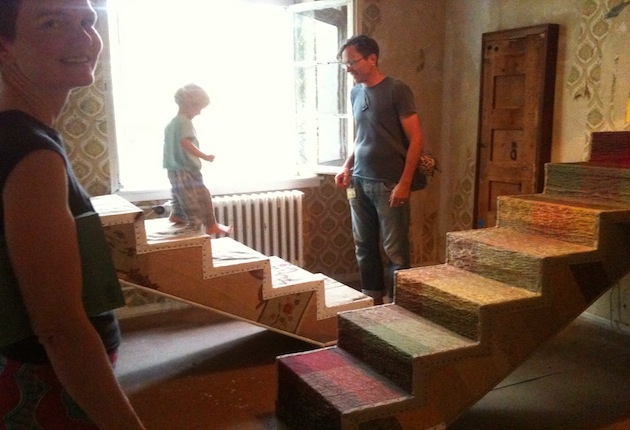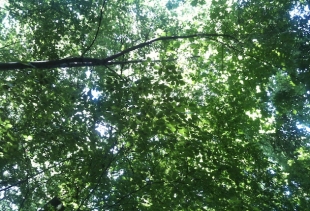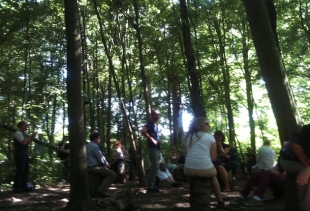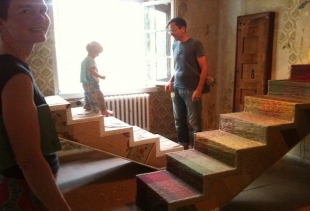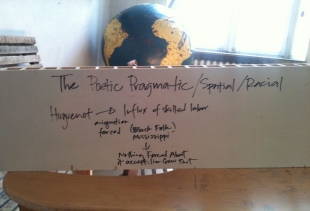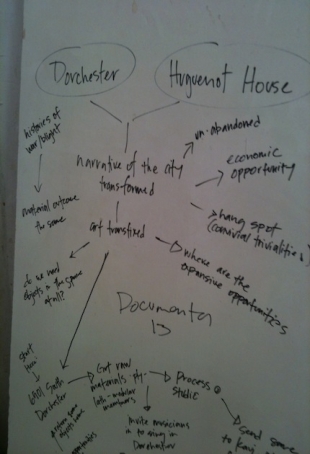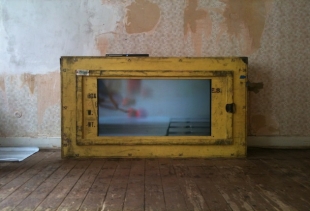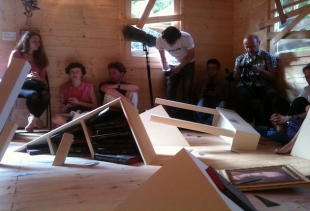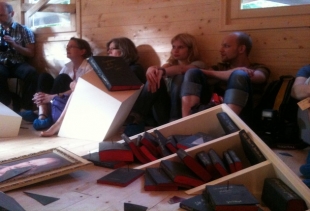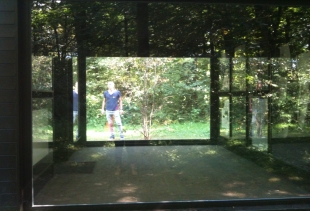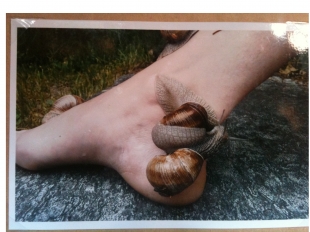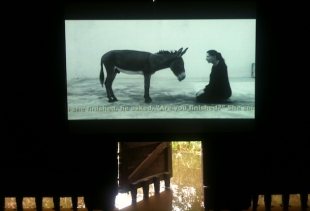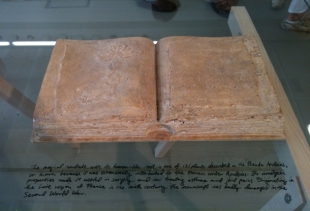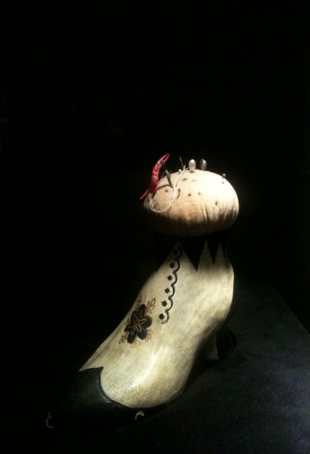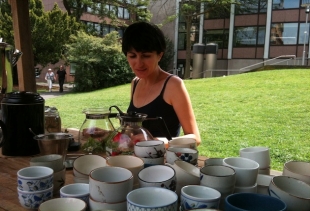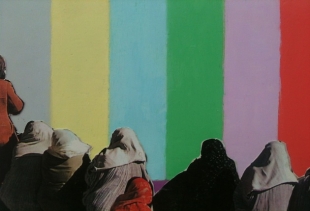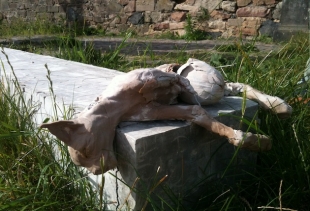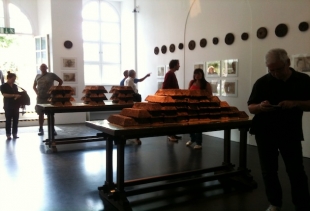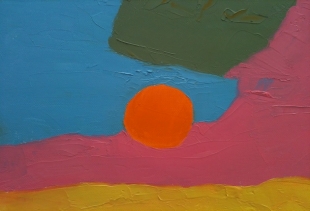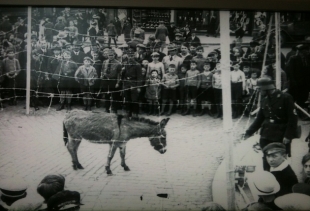» archive blog
-
Carnal, issue 0 of Parterre de Rois
A new magazine in Milandate: 18-07-2013
-
Interview with Nicola Toffolini
A worlds inventordate: 24-04-2011
-
Donne senza uomini.
Installazione multimediale di Shirin Neshatdate: 01-03-2011
Poetry, performance and the sculpture of the space reign over dOCUMENTA 13, together with biography
Chaotic, smart cues, atmospheres more rich than contents. A strongly blockbuster show
Kassel, resting in the middle Germany with its well maintained borders, waits for every five years to transform itself in princess. Of the arts. Population strongly feels it and is very involved (not only in order to rent any single space at home), above all is proud. It is 65 years that all Kassel is proud to wait for the event that changes the fabric of the city, from the morning ‘till late in the night – otherwise it would stay as usual, a calm somehow boring college-city. For 100 days, the 13th edition of dOCUMENTA is directed by Carolyn Christov-Bakargiev: beside the widest and monumental city park, Karlsaue, the event is developed on the underused old main train station – including its recording studios, Offner Kanal, offering poetry readings every night or so; including the hangars – the Bali and Gloria Kinos (this latter has been reopened after a long inactivity), all the public galleries and museums (from the Fridericianum to the more turistic Grimm Museum, until the old Mausoleum and bunker), as far as culturally and geographically distant places like Afghanistan and Egypt, then the Canadian mountains.
If it is true that Bakargiev promised not long time ago to do not wish to over expose herself than the artists, she also affirmed wanting to be only a traffic controller instead of an artistic director. After having seen all the show in Kassel, I think she was not able to resist and indeed she appeared a lot: here and there statements, pictures and a couple of “artworks” treated as the others (provided with caption, localisation in maps, catalogue) make her much more present than what you expect from the role of an artistic director. As for example, she plants small trees to do not forget Shoah in the park and insert them as an artwork into the map. Giuseppe Penone has been invited to create close to her brainchild (a small apple garden) a permanent, huge bronze tree that is handling a big marble river stone with the lightness of who, a master, is able to truly tell the history all in a memento.
It is my first visit to Kassel and, touched before arriving by the aura surrounding the event as everybody was whispering to me, I got myself wandering in the middle of the most blockbuster event ever, whose expression was caught in a Ryan Gander bunch of works everywhere, in every single location of the show, or in a un-meaningful Jeronimo Voss at Orangerie beside other works (and pre-existing collections) full, on the contrary, of sense. I did also not appreciate the many wooden houses, all similar or very the same, in the memorable sculpture park (they’ve been issued thanks to a sponsor). The similar material and form was causing less surprise to the artists’ projects that have been exhibited in that form-container. To speak more in general, dOCUMENTA seemed to me really overpopulated (audience is in majority from Germany in the days I’ve visited it). Even if at the Hauptbanhof, the former city main train station that is an huge space, it has been impossible to properly see almost any work of art, some pieces had a queue time of 40 minutes (as Kentridge’s movie, and the one beside 25!) Bafflement, at the point to over-question me about how this could be done so and why…..at my second day of visit I was surrendering but….
Tino Sehgal e Theaster Gates: the first was trained in economics and dance while the second in religion and urban planning in the between of the old and the new world. After my long, unfruitful pilgrimage among all the venues of dOCUMENTA(13), I gave a sense to my visit and to the entire experience to be in that town.
Well placed one beside the other, Sehgal let dance and talk unknown performers in the middle of a very darkened room; the second, Gates, rebuilt a far away US place in a Kassel building by using the timbers and any surface of it to be adapted and forged in everyday object (beds, rocking chairs, side tables, strange furniture able to serve in a performance house). And above all he creates a superb permanent stage (to host ballades, jazz sessions, yoga and cooking classes, going through intense and well done DIY sessions).
Inside the darkened room that stands below the city hotel, by getting yourself slowly slowly accustomed to pitch black, you even learn to see and so discover that Tino’s performers time by time transform themselves in audience and then restart to make of them a piece of vision and a lesson (of life). Is art audience blind and self-referential?
Inside the Huguenot’s House, a light and sprawling structure that is the breeding ground of minds and the forge of Gates, at the same way as into Sehgal’s space, you’re able to stream and flow back, without a fixed role and without arrogance, by reading and knowing everywhere about tricks, ideas and experiences for a new social frame. Maybe the artistic director was referring to him when she was releasing interviews regarding her interest to let the things speak and to put on stage the language of unanimated objects, because I did not see any other clever case matching this curator’s statement in the whole show.
Chiara Fumai, the real outsider among the invited Italians at Kassel, is a multi-instrumentalist of vocations, we could say: trained as architect, she has been also a dj and has been engaged in music and sounds (or maybe she still is). Only recently she chooses the label/role of artist that could mean anything but also nothing. She put on stage herself overdressed: in the case of Shut up! Actually talk, one of the two performances the audience encounters in her art piece, she is a sadist and ironical witch playing a j’accuse of the feminist perspective. The witch’s speech is taken by somebody else’s text – a letter/pamphlet of Carla Lonzi, an Italian philosopher founder of one of the pivotal Italian feminist activist groups, Rivolta Femminile – and incredibly mocks up the “equal difference” motto of Seventies riots of girls and ladies against what we still nowadays call in Italy a masculine power. This interpretation says much more about Italy (and also how you can be artist in the country and what you can create in and for the country given the state of fact in which the nation is stuck) than any other art piece on show stated, as for examples the Favaretto’s one. This performance happens every week of dOCUMENTA13 from Thursday to Saturday without an actor (on each Sunday the artist plays another character made by herself that is always part of the installation): Fumai personalized one of the small wooden cottages the sponsor made available in the monumental park of Karlsaue, by leaving consistent and not evanescent traces of her tension toward a more personal, authorial and authentic version of the recent history of Italy. There is not only manierismo in Fumai, to be sincere there is not manner at all. She is only making a very cultured and careful stage construction, by revealing an extreme philology toward sources. The path her young art is maybe reaching is the body and situationist sculpture. At which she adds an incredible courage and the extreme exploitation of her limits (the artist also performed on the roof of Fridericianum in a different program). Also Rossella Biscotti (Neue Galerie) is working on important chapters of Italy after fascism but, beside the fact she uses an actor and never herself – she builds her performance as it is a documentary script (that has been identically proposed also in all her previous works). And she frames all the living experience as it would be a 2d work, such as, I mean, a canvas. With Fumai, I think, once again as in Seghal’s and Gate’s outputs, the previous and heterogeneous knowledge have their weight, the art of being themselves is the main thing.
After the weight of past bits of lives, after the weight of performance (almost all dOCUMENTA13 works on show are also performative), Anna Maria Maiolino (Karlsaue Park), introduces the third theme I felt as positively heavy in this year of the show: the sculpture as space, that dominates ex aequo with the need to make poetry that is very present as well. In Here&There the artist (whose origins are from Calabria region, Italy, but she left the country at 6 and then studied in Caracas, then she settled in Brazil) fills in different ways (also with absence) an existent and proper house on the edge of the park. Mainly she fills it with clay that is modelled in so many ordered and identical pieces that lay over any moment of the space, even the passages, all around the rooms. Except in the basement where the artist installs a poetry and a sound piece (the first is also published in one of the 100 notebook that also constitute the main catalogue of the German festival). Repetitive geometry of clay pieces (useless objects, all exact copies that show solidarity one with the other, placed in group of many) is able to carve the space, and so the time, without exertion and without the fear to be a pure abstract exercise.
This happens, even with less abundance in repetition, also with Rosemarie Trockel (Karlsaue Park), where she, in another standardized wooden cottage, summarizes some new pieces projects mainly with photos. Where there is no tapestry made of images, there are two big glass walls that open the full view on lateral visions of the park. Even if not on the main park-ways and so - in a word – being blind views, the two perspectives are unique and enable a powerful achievement of the space. Viewers are crucially involved in it: this is, another time, a case of immanent sculpture even if less solid and less three-dimensional as that of Maiolino appears, indeed Trockel’s is more experience-based.
Joan Jonas builds a window display of her recent pieces. The video artist’s work is interesting because her cottage in the park is added-on with a garden and a buffer space that are, even small, both symmetrical to the park skeleton. A kind of geometrical puzzle who tries to make order (as an information leaflet made of artificial landascape) of all the aesthetical, functional virtues of the place.
At Ottoneum (the actual Natural history museum of the city), AND AND AND builds a garden of flowers and herbs to make tea coming from mixes without any boundary - as rose and sage or any other free taste association of flowers and herbs. These all are coming from a Kassel farmer guru-like, tells Lala, who assisted the artists to make such an encyclopaedia of properties and remedies of the spices and their scents, then to become a participatory artwork. The garden is a kind of prologue to the artist Claire Pentecost, who is showing a piece inside the venue, able to create a quick geography of what is property, in this work measured with seeds and clods having a form of gold ingots.
Mario Garcia Torres (Fridericianum) plays treasure hunt and break in Boetti’s iconoclasm (to Alighiero is dedicated a retrospective room, but the reasons comes from far away times and histories: he had already to be invited at Documenta…): a documentary showing the search of the Kabul hotel the artist ran for many years, until to appoint the Afghani capital as his second city after Turin and Rome.
This work is very well matched with the one signed by Kader Attia, keenly immersed in a room with a high temperature. A gigantic shelf for statues and books speaks of the cruel gap between North and South of the World that cannot be filled. Often it could be filled by violence or by predation or by both. And the documentary is not so far also from the work by Michael Rakowitz who studied the evil paths from West to East (the Kabul last bombings are the source for a sculpture piece made with local carvers to create copies of destroyed paper manuscripts in Baryan travertine, exhibited together with fragments of precious bombed statues).
The space the more original at Fridericianum is the one called Rotonda, hosting a not orthodox mix&match of art genres and époques: old pieces (as the Bactrian Princess, female statues from II BC cent. coming from Central Asia) together with Lee Miller’s photo stories and other sculpture. And video works: the doughy and mincing, indeed cool, Sloshed Ballot &Anonymous Loan, 2011, by the 29 years old Tamara Henderson; then a tragic documentary footage by the dead artist Ahmed Basiony (made with a camera on his body) who already represented Egypt to Venice Biennale.
A word or two more on Tue Greenfort who played the double role of agent of curator and an artist on show at dOCUMENTA 13. He created and compiled - with the participation of researchers, artists and poets - The Wordly House that is at the very end of the park and is not a standardized wooden cottage built on purpose as for the other artists, but a prior construction of elder memory. Maybe because wordly is a so be-loved word for the curator and name-maker, this piece is almost standing as the summa of the entire show: chaotic, with some delicious cues, with atmospheres that tell more than the content. A small house on the water displays a video menu of the most famous performances in art history, then has a sui-generis library and is a place pleasant to remain. As long as possible. The artwork is inspired and dedicated to the writings of Donna Haraway about multi-species evolution.
I’d like to trace all the countless dTOURS in order to see which artist leading the guided visits inserted in their ones those I feel the most amusing projects and also the ones impossible to be categorized under the trees of emotive interpretations I built about this Documenta (performance and poetry, space-sculpture and programming): the one of Fiona Hall (a special, intimate and touching memorial of a burlesque actress included her buried rests), the one of Susan Hiller (Die Gendanken sind frei: 100 songs for 100 days of Documenta, a big juke box playing by choice of the viewer/listener the 100 songs that tell about revolution at any latitude of the word, present at Neue Galerie but also in various places: only at Neue it has been shown with the clever book the artist compiled with all the texts and the notes of the lyrics), the piece of Marco Lutyens (Hypnotic show accompanied with booking based hypnosis collective sessions in the so-called Reflection Room made of one room mirrored upon the other where the conjugated floor and ceiling have been erased) at the park; that of Jimmie Durham in one of the abandoned winter gardens. And the Sanatorium by Pedro Reyes (already realized in New York on 2011 curated by David Van Der Leer) where to book treatments and to get remedies for the most varied needs, including a tasty… therapy for couples. To end, Allora&Calzadilla hidden into the bunker: a concert for sole flute (it is a prehistoric one, forged from a bone) executed for a sole listener: a big raptor.

